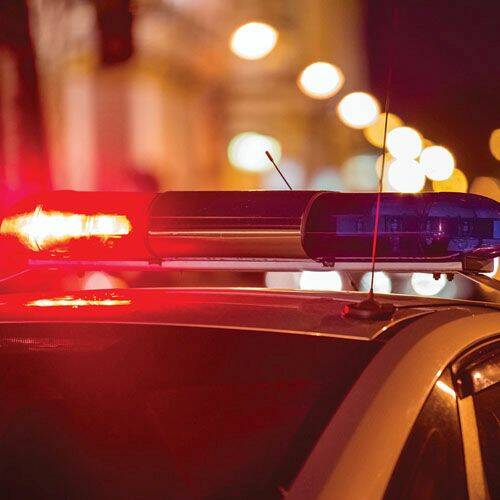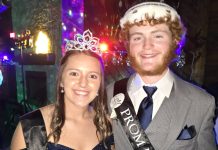As conditions in residential areas slowly deteriorate, neighbors begin losing control over what is considered standards of acceptable behavior.
That often leads to higher crime rates, according to the National Neighborhood Watch, formed in 1972 by the National Sheriffs’ Association.
In Columbus, a strong commitment to protect and improve neighborhoods emerged after 80 residents living near downtown met on Aug. 13, 2013, to address an alarming rise in drugs and property crime.
Three months later, the Ninth Street Park neighborhood watch group was created. In March 2014, a group representing areas further west was formed, now known as the Historic Columbus Downtown Alliance.
[sc:text-divider text-divider-title=”Story continues below gallery” ]
Today, 15 neighborhood watch groups are operating with the assistance of the Columbus Police Department, spokesman Lt. Matt Harris said. Typically, officers provide organizational help and contacts with similar groups in the community, he said.
Here’s a look at the four most recently programs, beginning with a group that met for the first time shortly before the Memorial Day weekend.
Flatrock Park North
Norm Blizard was walking his dogs along Northeastern Boulevard when the Cummins Inc. retiree realized how quiet Flatrock Park North was during the day — and how few of his neighbors he knew outside of his immediate area, he said.
“It’s a good neighborhood with a low crime rate,” Blizard said. “But with the growing problem of opioid addiction, I felt it was time to form a neighborhood watch program.”
About 20 people RSVP’d for the May 15 organizational meeting after Blizard canvased the entire 217-home neighborhood west of the Columbus Municipal Airport with invitations, said his wife, Susie Blizard.
“We didn’t expect any more than that, but they just kept coming and coming,” said Susie Blizard, who counted nearly 50 residents gathered in her front yard for the kickoff meeting.
“That number is fantastic,” Harris said. “They’re off on the right foot. And if they keep it up, they shouldn’t have any problem keeping this group going.”
The agenda for the first meeting included 15 minutes of socialization, followed by distribution of an attendance sheet. While providing organizational tips, Harris and officer Alyson Rech outlined what type of suspicious behavior should be reported to police, Norm Blizard said.
Future steps that may include collecting family data sheets and identifying block captains will be considered when the group meets again in mid-September, Norm Blizard said.
Nextdoor, a private social networking service for neighborhoods, is being utilized to establish correspondence among neighbors in Flatrock Park North.
As of the end of May, the Blizards had 85 neighbors signed up for the service, Norm Blizard said.
Two Worlds
Located off Beam Road a few blocks south of National Road, Two Worlds of Columbus has long had an association that now represents 110 residents living in their apartments and condominiums.
A five-member board of directors meets monthly, while the 45-member Two Worlds Homeowners Association meets quarterly, association vice president John Brent Sohn said.
While there was a self-standing neighborhood watch group in Two Worlds for about 10 years, members eventually became inactive, he said.
But then escalating drug problems led to more cars being broken into, more stolen bicycles and more stolen tools and lawn ornaments, Sohn said.
“When we did have police come, it seemed like a lot of people wanted to load up on them,” Sohn said. “But the truth is that the city doesn’t have that many officers, compared to our population. And if you don’t have these watches, you aren’t going to catch the bad guys.”
A decision was made about three years ago to incorporate a new watch program within the Two Worlds Homeowners Association, Sohn said.
Such links with community development offices, tenants’ associations, or housing authorities are strongly encouraged by the National Crime Prevention Council for watch groups.
Not only do these links result in longer-serving watch group members, but they also provide infrastructure such as meeting spaces useful for a variety of purposes, the council states on its website.
The biggest challenge has been convincing retirees who fear retaliation that they can make anonymous reports, Sohn said.
The situation is not yet perfect at Two Worlds, as evidenced by a car theft last year and the discovery of a hypodermic needle in February, Sohn said.
“But we have seen a curtailment of crime,” he said. “More people are feeling they can do something about it.”
This year, the association is considering a proposal to put up security cameras throughout the complex, and have the images routed to a central computer, Sohn said.
22nd and Chestnut
With about 30 active members, 22nd and Chestnut Streets watch group was originally formed in July 2015 to look after homes bordered by 22nd and 23rd streets, and between Chestnut and Sycamore streets, group member Janet Law said.
But now, the group has attracted interest from people living as far south as 16th Street, Law said.
Many of the members refer to themselves as “window watchers,” she said.
“We give permission to each other to be nosy, and notice what’s normal and not normal,” she said. “It provides a level of comfort.”
Formal meetings take place three times a year, Law said. After each meeting, a full summary of every discussed topic is distributed, Law said.
But in between meetings, residents rely on email to update each other on crimes occurring in or near their area.
While thefts and vandalism were the original concern, it’s the recent discovery of discarded hypodermic needles that frighten the most people, she said.
“But some people still think the officers won’t do anything about it,” Law said.
She emphasized that when police records show a large number of calls coming from a neighborhood, it gives investigators grounds to take more proactive steps such as increased patrols.
“Even if the property isn’t recovered, police still need to know,” she said.
The 22nd and Chestnut watch group may consider an expansion request from the Columbus Police Department to incorporate Donner Park into its watch area, Law said.
Caldwell Place
This 20-member Caldwell Place watch group, which operates between 17th and 25th streets — and from Central Avenue to Hawcreek Boulevard — was in existence informally for some time before being officially formed a year ago, co-coordinator Keith Maddox said.
“We’re primarily concerned with the walk-through and drive-through traffic,” Maddox said. “There’s a lot of property crime going on in the neighborhood.”
Utilizing social media, a website, and even smart phone apps, members have developed a reputation for being a little somewhat high-tech, Maddox said.
Meeting once every two months, the most recent meeting attracted about a dozen residents, so the Caldwell Place group is looking into more face-to-face activities to promote bonding, he said.
Like the Two Worlds organization, the Caldwell Place group also frequently reminds residents they can make anonymous tips to assuage fear of retaliation, Maddox said.
“I ask them: ‘Do you really want to live with that stuff going on?'” Maddox said. “It will hurt you worse than if someone knows you called police.”
While some residents respond to appeals regarding self-responsibility and neighborhood pride, others are more likely to be persuaded to become active when they realize they are protecting their own property values, he said.
“We do feel we are making the difference,” Maddox said.
[sc:pullout-title pullout-title=”Key components and obstacles ” ][sc:pullout-text-begin]
Neighborhood watch programs
Key components: Watch groups are not vigilantes and should not assume the role of the police. Their duty is to ask neighbors to be alert, observant and caring — and to report suspicious activity or crimes immediately to the police. The first step in creating a program is to identify people most concerned about crime in the neighborhood and organize a meeting of these individuals to discuss safety. Police can be invited to a neighborhood meeting to discuss community safety, and volunteers can be solicited to serve as block watch leaders. The neighborhood may be divided by blocks and block leaders assigned to serve as points of contact. A communication network can be organized to distribute information about crime and security to residents.
Obstacles: Apathy, civic disengagement and fear are among the most common obstacles to forming a neighborhood watch group. Education, usually via law enforcement, can overcome such obstacles. Once groups are formed, volunteer momentum can wane if the program is narrowly focused and does not allow for a variety of roles that use residents’ talents and respect their varying degrees of comfort with visible involvement in public safety programs.
Source: National Crime Prevention Council
[sc:pullout-text-end][sc:pullout-title pullout-title=”List of watch groups ” ][sc:pullout-text-begin]
The 15 neighborhood watch associations operating in the city under the jurisdiction of the Columbus Police Department are:
- Broadmoor North
- Caldwell Place
- Cambridge Square Apartments
- Everroad Park East
- Everroad Park West
- Flatrock Park North
- Forest Park
- Historic Columbus Downtown Alliance
- Mead Village
- Ninth Street Area Neighborhood Watch
- Orchard Lane
- 22nd and Chestnut
- State Street
- Two Worlds
- Turtle Bay/Tipton Lakes
Other neighborhoods are taking steps to organize watch groups later this year. For more information about current programs or starting your own group, contact Columbus Police Lt. Matt Harris at 812-376-2605.
Information about the National Neighborhood Watch program is available online. Visit nnw.org.
[sc:pullout-text-end]






